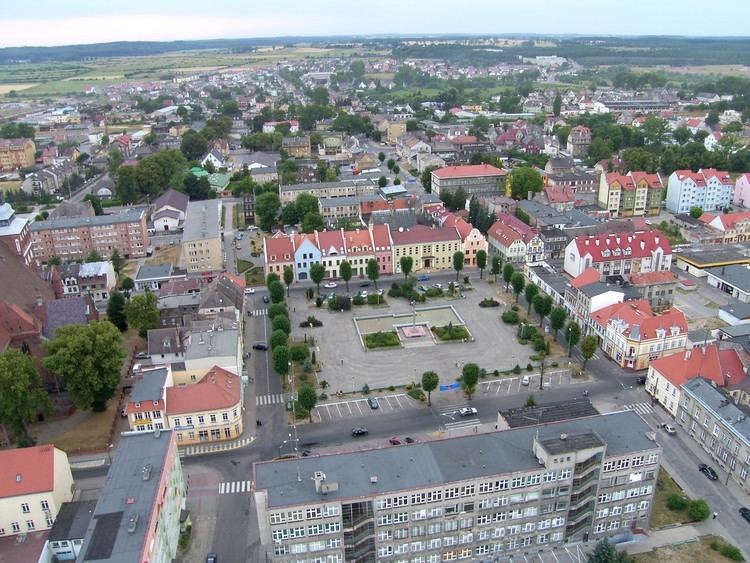Country Poland Gmina Gmina Gryfice Time zone CET (UTC+1) Area 12.4 km² Local time Saturday 3:08 AM | County Gryfice County City rights 1262 Postal code 72-300 Population 16,632 (2008) | |
 | ||
Weather 0°C, Wind SW at 6 km/h, 95% Humidity Voivodeship West Pomeranian Voivodeship Points of interest Muzeum Narodowe w Szczeci, Baszta Prochowa w Gryficach, Ogród Japoński | ||
Gryfice ([ɡrɨˈfʲit͡sɛ]; Kashubian: Grëfice), formerly known by its German name Greifenberg, is a town in Pomerania, north-western Poland with 16 632 inhabitants (2008). It is the capital of Gryfice County in West Pomeranian Voivodeship (since 1999), previously in Szczecin Voivodeship (1975–1998).
Contents
- Map of Gryfice Poland
- History
- Demographics
- Notable residents
- Twin towns Sister cities
- Literature
- References
Map of Gryfice, Poland
History
The Battle of Niekładź took place in the area of Gryfice in 1121, in which Polish ruler Bolesław III Krzywousty defeated Wartislaw I, Duke of Pomerania and Swantopolk I, Duke of Pomerania
In 1262, throughout the German Ostsiedlung, Wartislaw III, Duke of Pomerania founded a town under Lübeck law on the Rega river. After his death, his successor, Barnim I, Duke of Pomerania, named the settlement Civitat Griphemberch super Regam (Griffinsmountain) after the coat of arms symbol of the Dukes of Pomerania. In 1365 the town entered the Hansa and prospered due to the right of free navigation on the Rega.
A town wall was built and at the end of the 13th century the construction of the St. Mary’s church was begun. In a document of 1386 a Latin school is mentioned, which is generally called the oldest in Pomerania. After the death of the last Pomeranian Duke and by the Treaty of Westphalia Greifenberg became part of Brandenburg-Prussia in 1648 and part of Imperial Germany in 1871. In 1818 the town became the capital of the Greifenberg district (Kreis Greifenberg).
In 1894 the town was connected to the railway line Altdamm - Kolberg. On July 1, 1896 the Greifenberger Kleinbahn was opened, a narrow-gauge railway today used as a railway Museum.
At the end of World War II Soviet Red Army conquered the town, approximately 40 percent of the town was destroyed by a fire. Following the post-war boundary changes, Greifenberg was renamed Gryfice and became Polish. Its German population was expelled and the town was populated with Poles, many of them expellees themselves from Polish areas annexed by the Soviet Union.
Demographics
Before the end of World War II the (then-German) inhabitants were predominantly Protestant. With the transformation into a Polish town after World War II, the majority of its population has been composed of Catholics.
Notable residents
Twin towns — Sister cities
Gryfice is twinned with:
